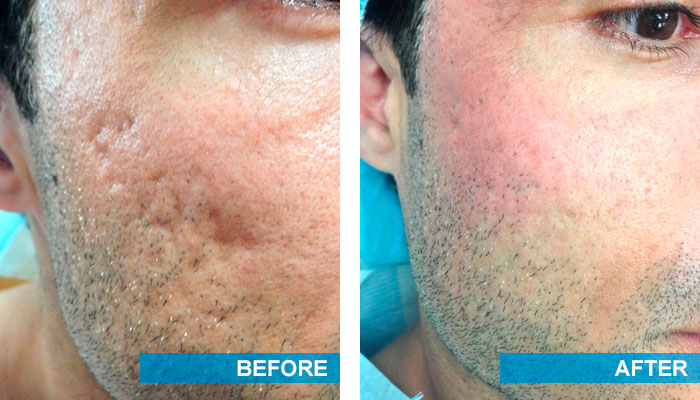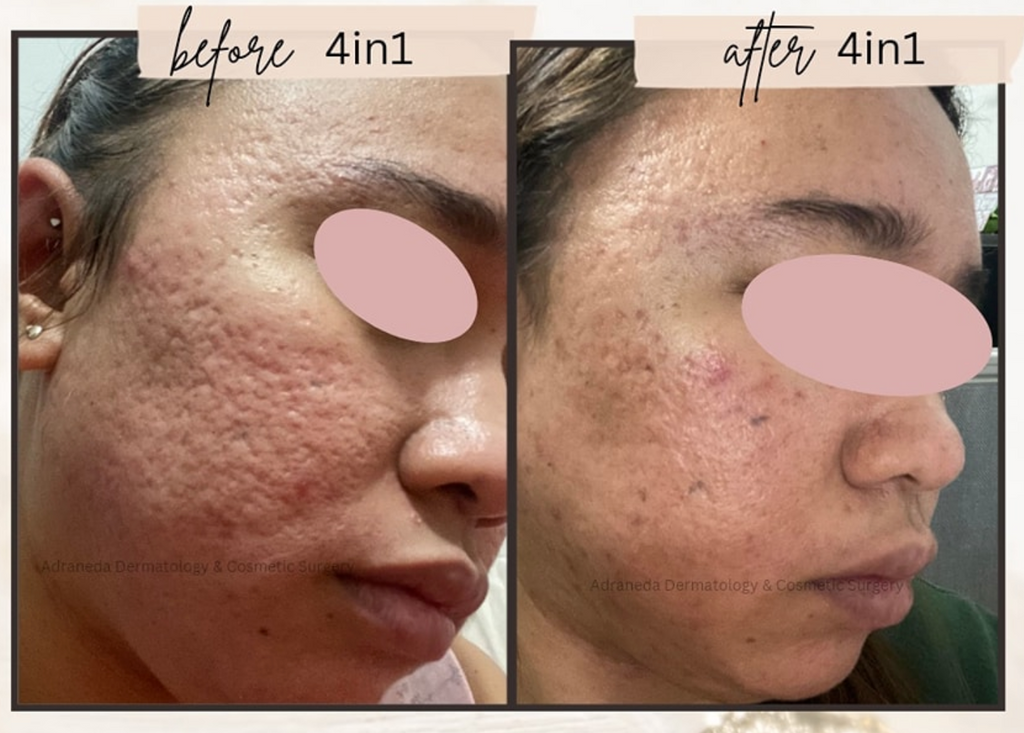Expert Acne and Acne Scars Treatment: Lasting Results for Clearer Skin
Expert Acne and Acne Scars Treatment: Lasting Results for Clearer Skin
Blog Article
Discovering Skin Conditions: Dealing With and determining Acne Scars for Healthier Skin
Acne scars stand for a considerable problem for individuals looking for to keep healthy skin, as they can influence both appearance and self-confidence. Recognizing the various kinds of marks, from atrophic to hypertrophic, is vital for establishing suitable therapy alternatives.
Understanding Acne Marks
Recognizing acne scars is important for any person who has experienced serious acne, as these marks can have a long-term impact on both physical appearance and mental health. Acne marks form when the skin goes through inflammatory actions throughout energetic acne lesions. The intensity of scarring is usually influenced by elements such as the type of acne, its period, and individual skin qualities.
The body's natural healing process can lead to either atrophic marks, which look like anxieties in the skin, or hypertrophic marks, which are increased and arise from overflow of collagen. Furthermore, the emotional toll of acne marks must not be taken too lightly; several people report sensations of shame, anxiousness, and decreased self-esteem. This emotional concern can influence social communications and total lifestyle.
Attending to acne scars requires an extensive understanding of their formation and influence. Awareness of the capacity for long-lasting repercussions connected with without treatment scars can inspire individuals to seek appropriate therapies. Early treatment and efficient management strategies can dramatically boost skin appearance and enhance psychological strength, highlighting the significance of comprehending the complexities bordering acne marks.
Types of Acne Marks
Acne scars can be categorized right into unique types, each displaying distinct characteristics and calling for certain treatment strategies. The main types of acne marks include atrophic, hypertrophic, and keloid marks.

Hypertrophic scars, in contrast, are increased above the skin level and are the result of excessive collagen production during the healing process. They typically remain within the boundaries of the original acne sore. Keloid marks are comparable but expand past the original injury website, creating bigger, raised areas that can be unpleasant or scratchy.
Recognizing these kinds of marks is crucial for selecting appropriate treatment choices. Various marks may respond much better to particular therapies, such as laser therapies, fillers, or medical treatments, highlighting the importance of a tailored approach to acne mark monitoring.
Recognizing Your Marks
When examining the look of your skin, it is vital to precisely recognize the kind of marks present, as this will inform one of the most reliable treatment strategy. Acne scars usually drop right into two categories: hypertrophic and atrophic scars. Atrophic scars, which are one of the most typical, look like depressions or indentations on the skin. These can better be categorized into ice-pick marks, boxcar visit this site right here marks, and rolling scars, each showing unique qualities and requiring various strategies for evaluation.
Hypertrophic scars, on the various other hand, are increased and take place because of too much collagen production throughout the healing process. Identifying the certain features of your scars-- such as texture, width, and deepness-- is essential for appropriate recognition. Additionally, think about the distribution of scars throughout your skin, as this can show the seriousness and duration of the acne problem.
Engaging with a skin doctor can offer useful understandings into the nature of your scars, helping in the distinction between different kinds. A comprehensive understanding of your scars will eventually bring about a more tailored and efficient therapy strategy, ensuring a clearer and healthier skin tone.
Therapy Alternatives Available
Determining the certain kind of acne marks present on your skin prepares for checking out reliable therapy alternatives. Common kinds of acne scars include atrophic (depressed), hypertrophic (elevated), and post-inflammatory erythema.
For atrophic scars, alternatives such as chemical peels, microneedling, and laser resurfacing are commonly used. Chemical peels off utilize acids to remove the outer layer of skin, advertising brand-new cell development.
Hypertrophic scars can be treated with corticosteroid shots to squash the mark or laser treatment to reduce redness and improve look. acne treatment for sensitive skin. Silicone gel sheets and pressure dressings may also assist in managing raised informative post marks
In enhancement, dermal fillers can temporarily fill out depressions from atrophic marks, while medical excision may be appropriate for extreme situations. Each treatment alternative has its considerations and advantages, making it crucial to talk to a skin specialist. They can provide tailored referrals based on the type and intensity of your scars, as well as your skin type and total wellness.
Tips for Avoidance
Efficient avoidance techniques can dramatically reduce the probability of developing acne scars. Utilizing non-comedogenic items helps avoid clogged up pores, which can exacerbate acne.
Preventing need to pick or pop acne sores is essential, as this can bring about deeper skin damages and boost the risk of scarring. Instead, think about utilizing a cool compress or over-the-counter therapies to minimize swelling and redness.
Sun defense is another vital element of prevention; ultraviolet (UV) rays can darken scars and impede the recovery procedure. Using a broad-spectrum sun block with a minimum of SPF 30 daily can protect the skin and Your Domain Name promote even recovery.
Last but not least, maintaining a well balanced diet rich in anti-oxidants, vitamins, and minerals supports skin wellness and recovery. Staying hydrated and managing tension degrees can also play a considerable duty in reducing acne flare-ups. By carrying out these methods, people can significantly decrease their chances of establishing acne marks.

Verdict
To conclude, understanding and identifying acne scars is important for effective treatment and accomplishing healthier skin. Different kinds of acne scars, including atrophic and hypertrophic scars, require certain treatments tailored to individual needs. Treatment options array from chemical peels and microneedling to corticosteroid shots, stressing the relevance of consulting a dermatologist. In addition, taking on a mild skincare routine and protecting the skin from UV exposure can dramatically add to the avoidance of additional scarring and overall skin wellness.
The body's natural recovery procedure can result in either atrophic scars, which show up as anxieties in the skin, or hypertrophic marks, which are increased and result from overproduction of collagen. They are more split right into three subtypes: ice pick marks, boxcar scars, and rolling marks. Acne scars typically fall into 2 categories: atrophic and hypertrophic marks. These can better be classified into ice-pick marks, boxcar marks, and rolling scars, each showing distinctive characteristics and calling for different strategies for assessment.
Numerous types of acne marks, including hypertrophic and atrophic marks, necessitate details interventions customized to individual requirements.
Report this page